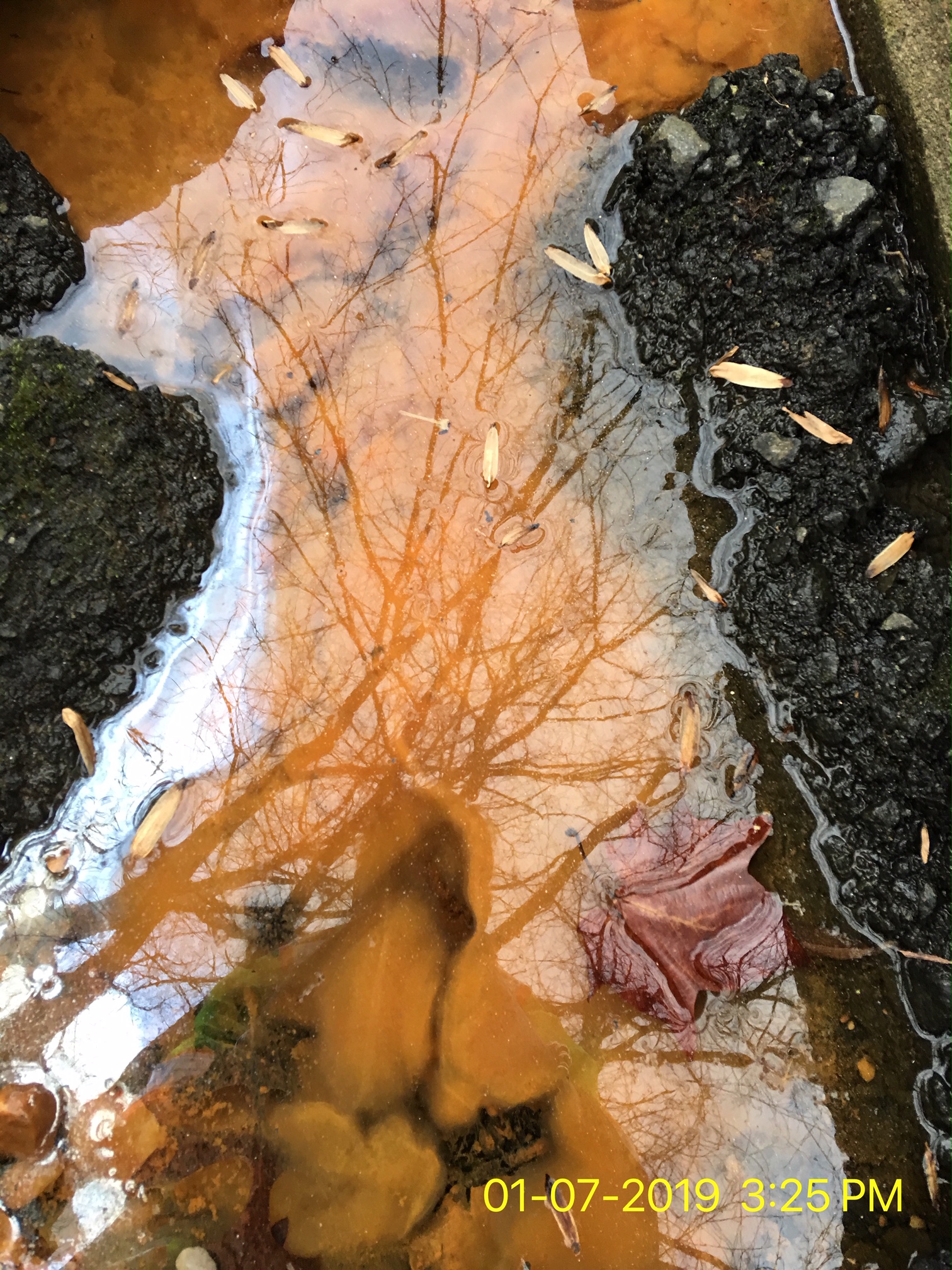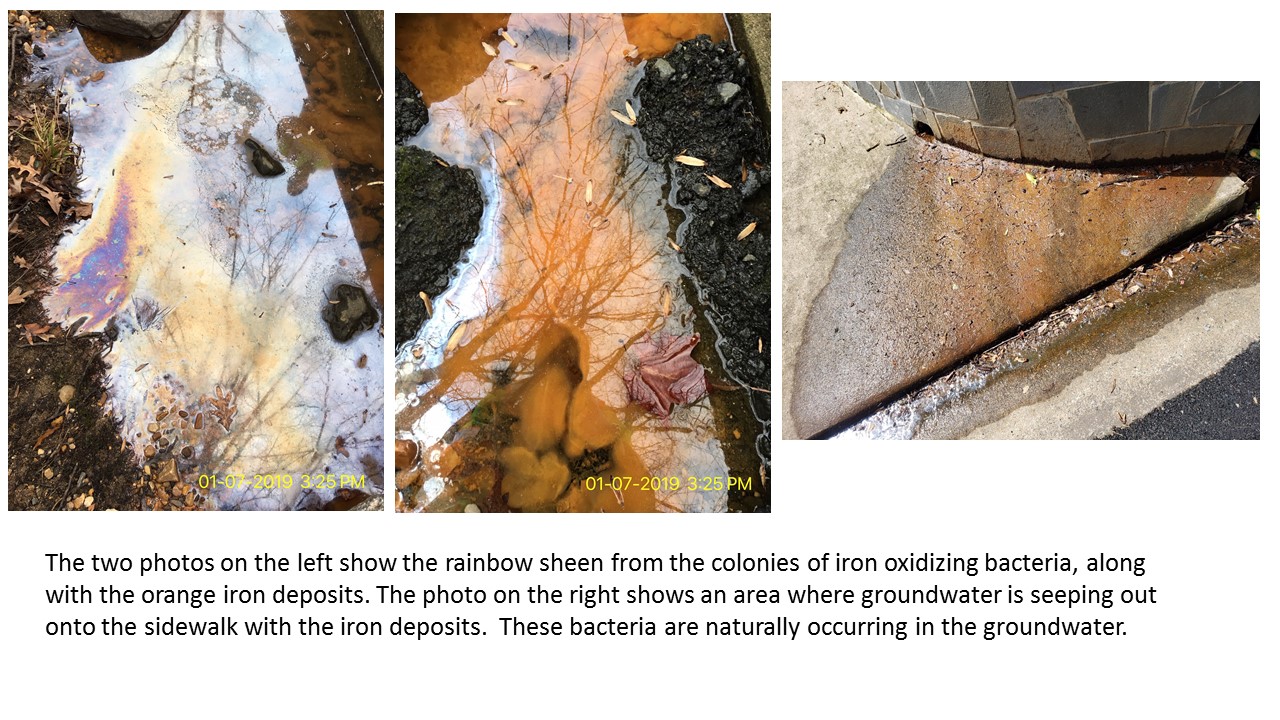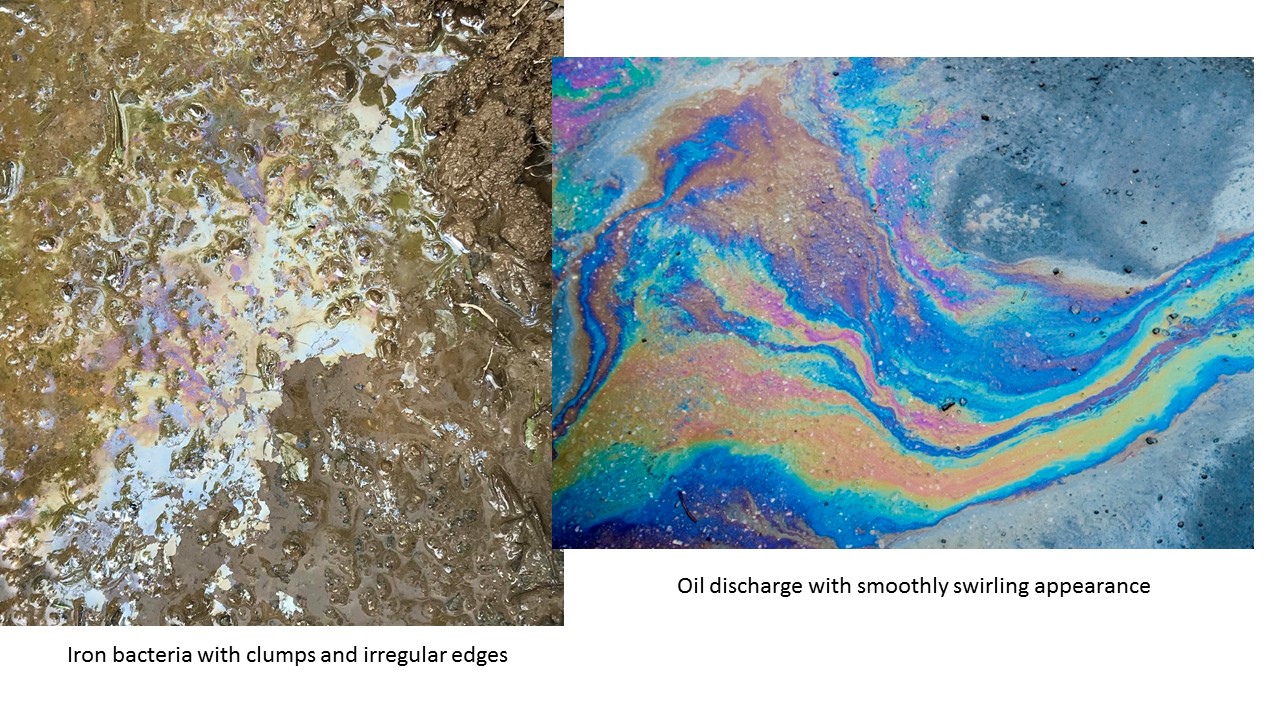Orange, Oily Sheen in Streams: Iron Oxidizing Bacteria
Published on May 16, 2019
You may notice an oily sheen along the edges of a stream, or along the sidewalk if groundwater or water from a sump pump discharges to that area. This is very common when it’s very wet and the groundwater levels are high.
Is it oil or something else?
There is a naturally occurring bacteria in our region that can look like oil on the surface of the water. The bacteria react with iron in the groundwater, sometimes creating fluffy orange deposits.

A rainbow sheen can result from iron-oxidizing bacteria or from petroleum. To differentiate, trail a stick through the film. It it readily breaks up, it’s most likely bacteria. If it swirls together, it’s most likely petroleum and should be reported.
How can you tell if it's oil, or bacteria?
To distinguish between iron oxidizing bacteria and petroleum, break up the oily sheen on the water with a stick. If the sheen stays broken up in pieces, then it is most likely iron oxidizing bacteria. Iron oxidizing bacteria is not harmful and may accumulate for several months until it is dislodged by high water flows.
If the sheen swirls back together, then it may be a petroleum spill. If you believe it is a petroleum spill, please call the Emergency Communications Center at 703-558-2222. The information will be provided to the Fire Department or other appropriate County department for follow-up. Learn more about types of stream pollution and how to identify and report them.


Learn more about other natural phenomena that can affect stream color and how to report stream pollution.